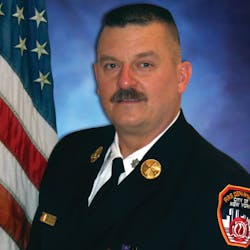I have stated many times that performing searches for civilians who are trapped or otherwise threatened at structural fires is of great importance. That said, conducting interior searches inside of buildings that are on fire is a dangerous undertaking, despite the fact that it can produce dramatically positive results.
Every firefighter knows searches at structural fires divide into two general categories: primary search and secondary search. How does the secondary search differ from the primary search?
Miss nothing
The primary search is the initial, rapid search of a building for victims and fire. It’s conducted in the earlier part of the firefighting operation when conditions are more severe and dangerous to the searcher. That also is the part of the operation when there’s a greater chance of finding and removing victims who can survive the event.
The secondary search is conducted later in the firefighting operation, after the fire largely is knocked down and is being brought under control. (Note: The fire is not under control, but interior conditions are improved and are, at the very least, not deteriorating.) Assuming that the primary searches are complete and negative, the incident commander should see to it that secondary searches are conducted in all involved areas of the fire building.
As a lieutenant in FDNY Squad 1, my unit occasionally was assigned the secondary search duties at multifamily dwellings or single-family houses. I emphasized to the firefighters how important it was that the search miss nothing! I know that we don’t want to miss anything on any search, either primary or secondary, but if a victim or other condition is missed or overlooked on the primary search, the secondary search can correct that condition. If a secondary search is incomplete in any way, the overlooked primary search condition might not be corrected. This could result in a victim being discovered hours or even days later.
The secondary search must be painstakingly complete and thorough. It isn’t an exceedingly rapid search, because the emphasis is on missing nothing. Since conditions generally are better at the time of a second search—meaning smoke and heat levels are much lower than what they were earlier—the searching firefighters can see the areas that they are examining much better. Since the time element is relaxed for this search, they can conduct a more detail-oriented search.
A third search?
Does it matter what company or which firefighters conduct a secondary search? The answer is yes. Try to use firefighters other than those who conducted the primary search of that particular area. Chiefs sometimes will rotate two units from their primary search area to a different secondary search assignment. The reason for this is that searchers who conduct a secondary search in the same area where they completed a primary search might examine the same areas that they looked at a second time, rather than applying the fresh view of a firefighter who didn’t search an area yet.
Is there ever a time when a secondary search has a negative result—no victims found—but another search still might be necessary? The answer, again, is yes. Occasionally, there are reports from building occupants or residents of the involved house that a family member still is missing and still might be inside, undiscovered. Of course, the details are important. If a parent believes that a 20-year-old child might be home, it could be true. If an occupant says that his/her 88-year-old mother lives on the second floor and hasn’t left the house in years, further search procedures certainly are required.
A tertiary search is one that’s necessary even after a secondary search produced negative results. If this final, or third, search doesn’t result in locating the missing victim, it might be necessary to literally shovel the area clean, to the floor. It doesn’t happen often, but on occasion, when conditions dictate it, don’t hesitate to order firefighters to remove all burnt furnishings to an area outside of the structure and to use shovels to remove all of the ashes and debris from the room. When the room is empty, the search is negative.

John J. Salka Jr. | Battalion Chief
JOHN J. SALKA JR., who is a Firehouse contributing editor, retired as a battalion chief with FDNY, serving as commander of the 18th battalion in the Bronx. Salka has instructed at several FDNY training programs, including the department’s Probationary Firefighters School, Captains Management Program and Battalion Chiefs Command Course. He conducts training programs at national and local conferences and has been recognized for his firefighter survival course, “Get Out Alive.” Salka co-authored the FDNY Engine Company Operations manual and wrote the book "First In, Last Out–Leadership Lessons From the New York Fire Department." He also operates Fire Command Training, which is a New York-based fire service training and consulting firm.






